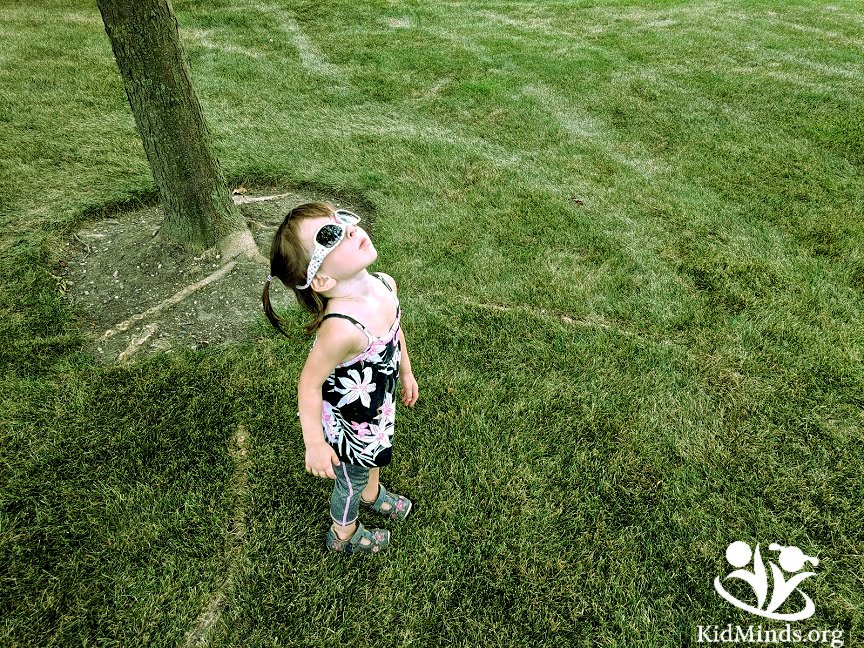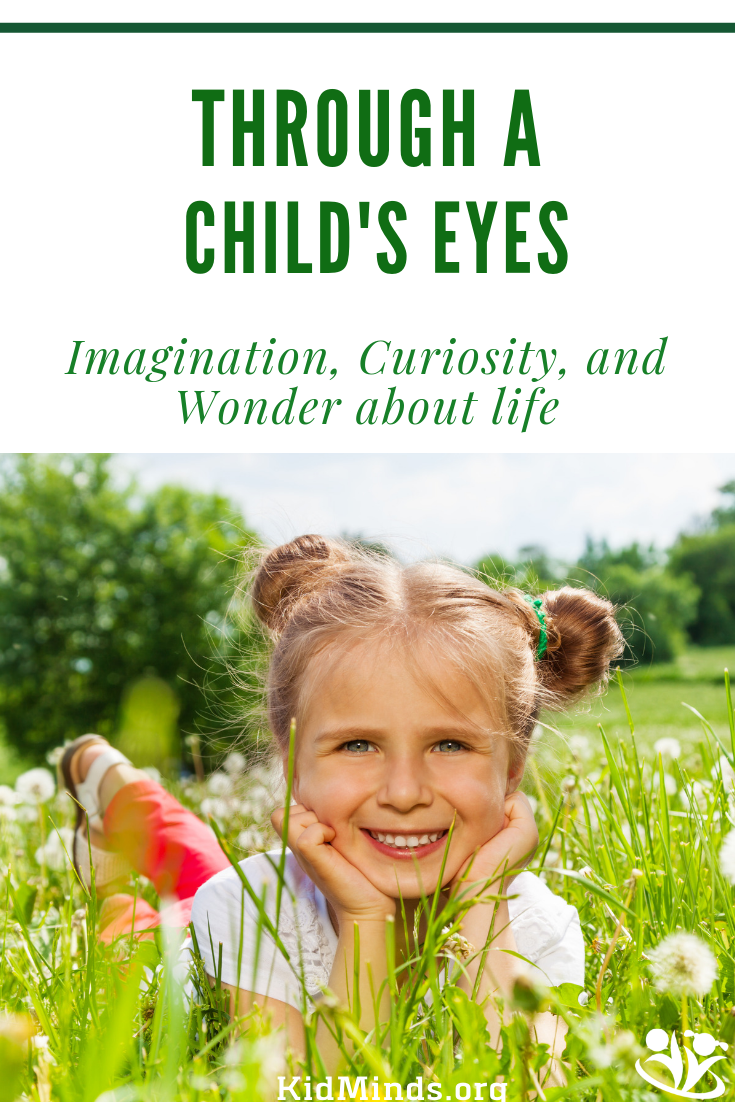Inside: In Through a Child’s Eyes, you will hear from my kids as they pick their favorite aspects of homeschooling. You can read about Our philosophy of homeschooling, How we set up our home for optimal results, Pick our educational materials, and Make math fun and enjoyable in previous posts.
“Through your eyes, I see the stars so bright, the moon, and the darkness of night.”
-—Suzanne Eichman, Through Eyes of a Child
Today I sat my older three kids down on a picnic blanket in the backyard and asked: What’s homeschooling like for you?
As extremely talkative and well-articulated kids, they gave me a boatload of information. Their answers ranged from “I like to sleep in and eat when I am hungry” to “I love to sip hot tea with milk while doing math and learn in positive and creative ways.”
We will be here all day if we talk about everything they mentioned, so I decided to focus on just three aspects that are especially dear to my heart.
Imagination
Through the eyes of my sixth-grader: “I love playing with LEGOs and being lost in my own world.”

My son spends hours every day in his LEGO room (in a pic above). His favorite activity is to use LEGO pieces to create scenes and act out complicated stories with many acts. It might take days or weeks for him to get through one of his stories.
When he’s in the midst of the adventure of his own creation, he might walk by me in the hallway muttering absent-mindedly, “Asrom didn’t find the key to the huslenk. If he doesn’t hurry up, Tugan will be lost and we can’t afford to lose another planet.”
I don’t know if I’m more intrigued by the intricacy of his stories or the fact that he can stay so intensely focused and involved for days on end.
Related post: The Alchemy of Learning: 5 things to do and 5 things to stop doing right away to unleash the true learning
How wonderful it is to have hours every day to wander off into creative mental explorations.
Without the restraints of time and opportunity, the child sees possibilities. The mind is fully awake, attuned. He is practicing sustained effort and attention. And it’s not just “child’s play.” Today, everyone with access to the internet can uncover answers. What’s valuable is the ability to synthesize, find unseen connections, think afresh, and, in other words, have an active mind that can go beyond the predictable.
“Imagination is more important than knowledge. For knowledge is
limited to what we now know and understand, while
imagination embraces the entire world, all
there ever will be to know and understand.”
—Albert Einstein
Curiosity
Through the eyes of my third-grader: “I want to know why flower petals grow this way. How does the bee know that we have these flowers here, and what would happen if I sprinkle wet sugar crystals on the leaves.”

My daughter loves investigating, experimenting, and spending time in the natural world. She tends to her own garden, builds bug hotels, and takes care of all our animals (a German Shepherd, a cat, and a Betta fish). But what I admire the most about my daughter is her curiosity.
She has a strong drive to seek out new knowledge. From a shelf of animal encyclopedias in her room, she has read most cover to cover multiple times. She constantly comes up with juicy questions and looks for ways to find answers. Would planting seeds in different parts of the yard make a difference in how they grow? Can you teach an old dog a new trick? And then she experiments to find answers to her questions.
Homeschooling creates an environment where her curiosity is constantly stimulated, and she can gain new knowledge in a way that suits her. You won’t be surprised to hear that “the human brain retains information better if we’re curious about it.” And also that people who retain their curiosity as they become adults tend to be more creative and more successful.
If you are curious about learning more about curiosity, I highly suggest reading Why?: What Makes Us Curious by Mario Livio, Curious? Discover the Missing Ingredient to a Fulfilling Life, and A Curious Mind: The Secret to a Bigger Life by Brian Grazer. (These are Amazon affiliate links).
“I have no special talents. I am only passionately curious.”
—Albert Einstein
Wonder about Life
Through the eyes of my kindergartner: “I like the moon, violin, and everything.”

“Because you are alive, everything is possible.” ―Thích Nhất Hạnh
When children grow up in an environment where they have enough hours in the day to wonder about life and all the possibilities it offers, they develop an attitude of everything is possible. Do you see the difference between spending most of the day shut up between the walls of the same building (for years) or going out every day and testing the limits of your abilities and trying new things?
What’s better for your spirit, mind, and body? And what a difference it could make at the end of twelve years (the typical span of a school career).
What’s “normal,” widely accepted, and customary doesn’t always mean better, healthier, happier, or more natural. I can think of many things that are widely accepted that are, in fact, bad. “Over 10 billion donuts are consumed in the US every year,” while “39.6 percent of adults and 18.5 percent of children ages 2 to 19 in America have obesity.”
There is this myth about homeschoolers that we stay at home all day watching TV and eating junk food. It’s very far from true. We don’t eat junk food (my kids have never tried McDonald’s or any other fast food), and we don’t watch TV (we do have a family movie night once a week). Besides all our academic learning, we have time to go out and do fun things that stimulate our minds, exercise our bodies, and gladden our hearts.
Related: Navy Seals, Homemade Peanut Butter, and the Power of Play: a Brief History of Our Homeschooling
My oldest son is a martial artist who also takes gymnastics lessons, plays piano and cello, and studies Latin (because it’s the language of scientists, and he wants to be a shark scientist when he grows up). He also loves to read about sharks, World War II, and hundreds of other topics. Homeschooling allows him to do all these fun things: hang out with friends, visit museums, and have moments when nothing is happening.
“There are only two ways to live your life. One is as though
nothing is a miracle. The other is as though everything is
a miracle.” —Albert Einstein

Finally
I believe children grow best when they can let out their energy in sports, music, art, experimentation, and free play. It charges them with excitement for life, sharpens their minds, and primes them for learning.
Most people have drifted from their capacity to engage in life fully. Do you often catch yourself doing things with only a fraction of your mind? How frequently do you give an activity all of yourself?
Of course, it would be simplistic to say that this or that one thing guarantees success. We have to look at the whole of our child’s experiences and be mindful and intentional. Sometimes, we need to switch to a different track, change directions, or awaken a new capacity. The trick is to be present to what is happening and go from there. We have to practice keeping our eyes and hearts open. And we also have to remember to look at the world through our children’s eyes.
When you look at the world through your child’s eyes, you’ll discover there are more colors in it and more opportunities to wonder. You’ll also learn that imagination is everything, curiosity is abundant, and wonder about life is central to the quality of our relationship with the world. All we need to do as parents is to nurture what’s already there.

Leave a Reply